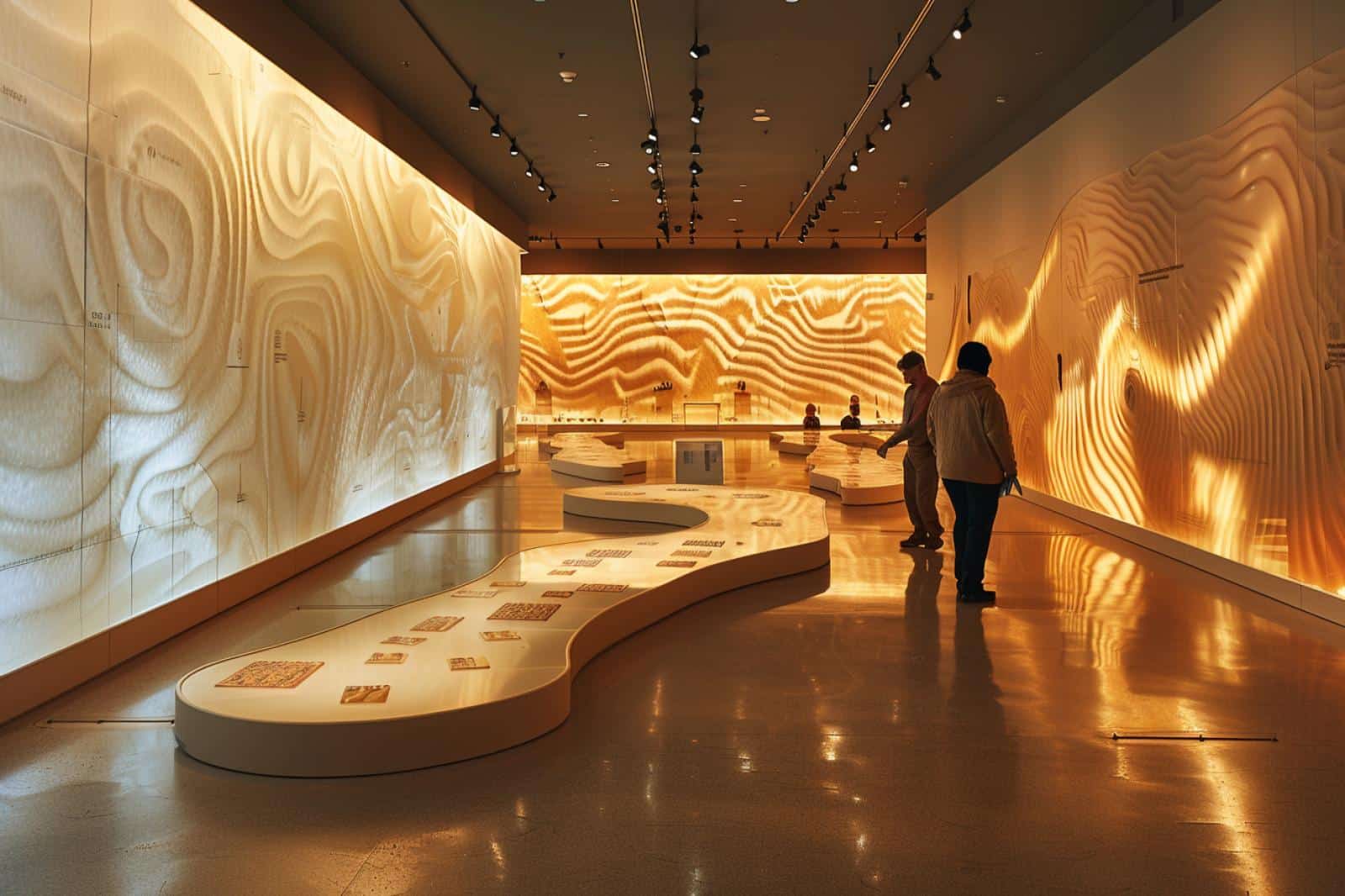In the modern age, museums are increasingly relying on digital innovation to bridge the gap between art and visitors. Museums are not just about displaying artwork on walls or artifacts in glass cases anymore. They’ve evolved into dynamic spaces that integrate technology to make experiences more immersive, interactive, and importantly, more accessible. In the following sections, we’ll explore effective digital strategies that museums can implement to enhance accessibility and enrich the visitor experience.
Harnessing the Power of Websites
A museum’s website is often the first touchpoint for potential visitors. Thus, it’s an integral part of creating an accessible and enjoyable museum experience for all.
Also read : How Do Self-Driving Cars Interface with Urban Traffic Systems?
Interactive maps, virtual tours, and online exhibitions can provide users with a taste of what the museum has to offer, even before they set foot in the building. Website accessibility also extends to making content accessible to individuals with disabilities. Implementing features like alt text for images, transcripts for audio content, and captions for videos makes sure that everyone, regardless of their physical capabilities, can enjoy the museum’s digital content.
Moreover, the website can host a wealth of resources, like articles, podcasts, and educational materials, that deepen visitors’ understanding of the exhibits. By offering these tools digitally, museums ensure that their content is accessible to everyone, everywhere.
Topic to read : Koddos: elite web hosting with robust ddos defense
Interactive Exhibits and Digital Signage
Interactive exhibits and digital signage are transforming the museum landscape, making it more engaging for the 21st-century visitor.
Interactive exhibits allow visitors to engage with the content in a hands-on manner. Whether it’s a touchscreen that reveals more information about an artifact or an AR application that brings an extinct creature to life, interactive exhibits create memorable experiences that go beyond passive viewing.
Digital signage, on the other hand, can improve the visitor experience by providing clear information and directions. It can also adapt to the visitor’s language preference, enhancing accessibility for international visitors.
Through these tools, museums can cater to different learning styles and make their content more accessible and engaging.
Immersive Media Experiences
Immersive media experiences can transport visitors into different times, places, and perspectives. They leverage technology like virtual reality (VR), augmented reality (AR), and mixed reality (MR) to create engaging and accessible content.
For example, VR allows visitors to immerse themselves in a recreated historical event or walk through an artist’s studio, providing an educational experience that’s both entertaining and informative. AR, in contrast, enhances the real-world environment with digital elements, like overlaying information about an artifact when viewed through an AR-enabled device.
Such experiences can be particularly beneficial for people who may be unable to physically access certain parts of the museum. So, while immersive media enriches the visitor experience, it also enhances accessibility.
Assistive Technologies
Assistive technologies can significantly improve museum accessibility for visitors with disabilities. From wheelchair-friendly interactive exhibits to hearing-loop systems in video installations, technology can help create a more inclusive environment.
Screen readers, for instance, can help visually impaired visitors navigate the museum’s digital content, while speech-to-text software can provide transcripts for deaf or hard-of-hearing individuals.
Moreover, some museums are leveraging the potential of AI to enhance accessibility further. For example, AI-powered robots can guide visitors around the museum, providing pertinent information about exhibits in an engaging and accessible manner.
The Role of Social Media
Social media platforms are an effective tool for enhancing museum accessibility. They can extend the reach of museums beyond their physical boundaries, making their content available to anyone with internet access.
Museums can share photos, videos, behind-the-scenes content, and even live-stream special events, making their offerings more accessible to a wider audience. Social media also allows for interaction between the museum and its visitors. Through comments, shares, and likes, visitors can engage with the museum and its content, fostering a sense of community.
Moreover, museums can use social media to gather feedback and insights about their exhibits, which can be invaluable for improving accessibility and overall visitor experience.
As you can see, technology plays a significant role in enhancing museum accessibility. Through websites, interactive exhibits, immersive media, assistive technologies, and social media, museums can provide enriching and inclusive experiences for all visitors. While these digital strategies are already making a difference, the possibilities for future innovation are endless. The future of museums is undoubtedly digital, and with this comes the promise of increased accessibility and richer visitor experiences.
Real-Time Engagement and Personalized Experiences
In the digital age, real-time engagement is a game-changer for enhancing the museum experience. Digital technology, including mobile applications and beacons, can interact with visitors in real-time, providing personalized and immersive experiences.
Mobile applications can make the visit more informative and engaging by offering audio guides, interactive maps, contextual information, and even augmented reality experiences. For instance, when a visitor approaches an exhibit, the application can send a push notification with relevant details, enhancing the visitor’s understanding and engagement.
Beacons, small devices that communicate with mobile apps based on proximity, can offer real-time, location-based information and services. For instance, they can guide a visually impaired visitor around the museum or provide real-time translations to international visitors.
Real-time engagement can also extend to social media. Museums can encourage visitors to share their experiences in real time, creating a sense of community and amplifying their reach.
Personalized experiences, meanwhile, can be achieved through data analytics. By analyzing visitor data, museums can understand visitor preferences and behaviors, enabling them to tailor their content and services accordingly. Personalized digital signage, for instance, can welcome visitors by name or suggest exhibits based on their interest.
Gamification and Educational Programs
Gamification and digital educational programs are effective strategies to engage visitors and enhance their learning experience.
Gamification applies game-design elements in non-game settings to motivate participation and engagement. In the museum context, it can transform the visitor experience. For example, museums can create treasure hunts or quizzes that encourage visitors to explore different exhibits and learn in a fun and engaging way. Augmented reality can also be incorporated into these games, creating immersive experiences for visitors.
Digital educational programs, on the other hand, can make learning more accessible and engaging. Online workshops, webinars, and courses can provide in-depth knowledge about the museum’s exhibits and themes. These programs can be particularly beneficial for students, educators, and researchers.
Moreover, educational programs can be designed to cater to different age groups and learning styles, including interactive e-books for children and detailed scholarly articles for academics.
Conclusion
Undoubtedly, digital strategies are revolutionizing the way museums operate, enhancing their accessibility and the visitor experience. Through digital tools like websites, interactive exhibits, immersive media experiences, assistive technologies, social media, real-time engagement tools, and educational programs, museums are not only attracting more visitors but also making their content more accessible and engaging.
However, as the digital landscape continues to evolve, museums must keep pace. They need to continually innovate and adapt, leveraging new technologies and digital strategies to meet the changing needs and expectations of their visitors.
This is not just about embracing digital technology but also about fostering a digital mindset. This involves recognizing the potential of digital tools to transform the museum experience, embracing digital engagement as a core part of their mission, and prioritizing accessibility in all their digital initiatives.
Indeed, the future of museums will be shaped by how effectively they harness the power of digital technology to enhance accessibility and engage visitors. In this digital age, museums have the opportunity to redefine their role and value, becoming more than just a place to view artifacts but a dynamic, interactive, and accessible platform for learning, exploration, and engagement.











